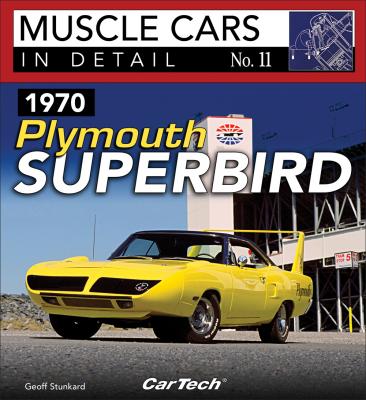1970 Plymouth Superbird. Geoff Stunkard
Чтение книги онлайн.
Читать онлайн книгу 1970 Plymouth Superbird - Geoff Stunkard страница 7

This Superbird, currently under restoration by Dale Mathews, shows how the backlight was mounted against the original window opening, precluding the need to cut out the OEM stamping.
This is a regular 1970 Road Runner backlight with optional vinyl top, showing the original styling cues that required a special body-paint corner trim molding to match after the plug was added. (Photo Courtesy Quartermilestones.com)
Creative Industries’s people worked closely with Chrysler to quickly mock-up the finalized parts, get initial samples done, and begin subcontracting the work. Although they had leased a substantial facility on 10 Mile Road, changing almost 2,000 cars to the degree that the Superbird required was out of the question, especially in the time allowed. Chrysler’s Lynch Road plant in Hamtramck, Michigan, became the location for all initial Superbird construction, with final assembly completed at an associated pre-production pilot facility on nearby Clairpointe Street. The facility was normally used to check tooling and fitment issues for each upcoming model year. All 1970 pilot work was long completed by October 1969 and the 1971 pilot model process did not begin until spring 1970. The plant was large enough to do the job, factory-owned, and it was nearby. That settled the issue.
For its part, Creative Industries was responsible for creating or procuring all the specific components that would be used on the Superbird. The wing, small add-ons, front spoiler, and fully constructed nose assemblies came through them. It was a huge undertaking based on how quickly the cars would be going into production. Thankfully, all internal components from the Daytona nose were adapted unaltered to the Superbird version. The nose structure on both cars was always steel with the headlamp doors being the only fiberglass components.
Factory paperwork in the Frank Badalson and David Patik collections shows that the first documentation summary for Plymouth NASCAR Program tools and special equipment was announced via interoffice correspondence on August 18. It cryptically alluded to success only if the program was reactivated by August 20. This denoted component materials, initial supply dates, and tooling times (most by early September, with some as late as October 8).
Конец ознакомительного фрагмента.
Текст предоставлен ООО «ЛитРес».
Прочитайте эту книгу целиком, купив полную легальную версию на ЛитРес.
Безопасно оплатить книгу можно банковской картой Visa, MasterCard, Maestro, со счета мобильного телефона, с платежного терминала, в салоне МТС или Связной, через PayPal, WebMoney, Яндекс.Деньги, QIWI Кошелек, бонусными картами или другим удобным Вам способом.